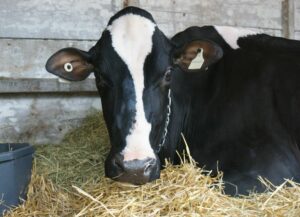Fernando Díaz
Milk ejection occurs when the myoepithelial cells that surround the mammary alveoli contract and milk is transported through the milk ducts into the cisternal compartment. However, when oxytocin is not available to the myoepithelial cells, milk flow is disturbed, resulting in delayed milk ejection (DME) or bimodality.
A recent study from Michigan State University evaluated herd-level variables associated with DME. The researchers visited 64 Michigan dairy herds and conducted a milk quality evaluation focused on five pillars: milking behaviors and proficiency, milking systems, cow environment, monitoring and therapy of infected cows, and management.
Average herd size was 451 milking cows (ranging from 59 to 2,771 cows) with a daily milk production of 36.8 kg/cow and average somatic cell count of 136,800 cells/mL. In addition, the investigators conducted two surveys with the farm management team: one about their mastitis control practices, attitudes, and behaviors, and another one regarding employee communication, training, and education.
The authors, Moore-Foster et al. (2019), determined four phases of milk flow intensity in the study:
- start of milking
- start of the incline phase of milk flow
- start of overmilking (end of the decline phase)
- end of milking.
Cows were identified with DME when the time interval between the start of milking (milking unit attachment) and the start of the incline phase was longer than 30 seconds. The results, published in Journal of Dairy Science, showed:
- On average, 25% of cows had DME after milking unit attachment.
- Average total tactile teat stimulation time was 14.2 seconds (minimum: 2.5 s; maximum: 40.8 s). Interestingly, teat stimulation time was two times greater (19.2 seconds) in smaller dairies (less than 300 cows) than in larger ones (8.8 seconds).
- Average latency period, defined as the period from first-time teat stimulation to milking unit attachment, was 103 seconds (min.: 33 s; max.: 165 s).
Using a multivariable model, the researchers found that tactile teat stimulation time was negatively associated with DME so herds that stimulated teats for a longer time had a lower proportion of cows with DME. Surprisingly, the study did not find an association between DME and latency period.
In conclusion, increasing teat stimulation time during the pre-milking routine reduces the percentage of cows with delayed milk ejection.
Reference
Moore-Foster, R., B. Norby, R. L. Schewe, R. Thomson, P. C. Bartlett, and R. J. Erskine. 2019. Herd-level variables associated with delayed milk ejection in Michigan dairy herds. J. Dairy Sci. 102:696–705.









